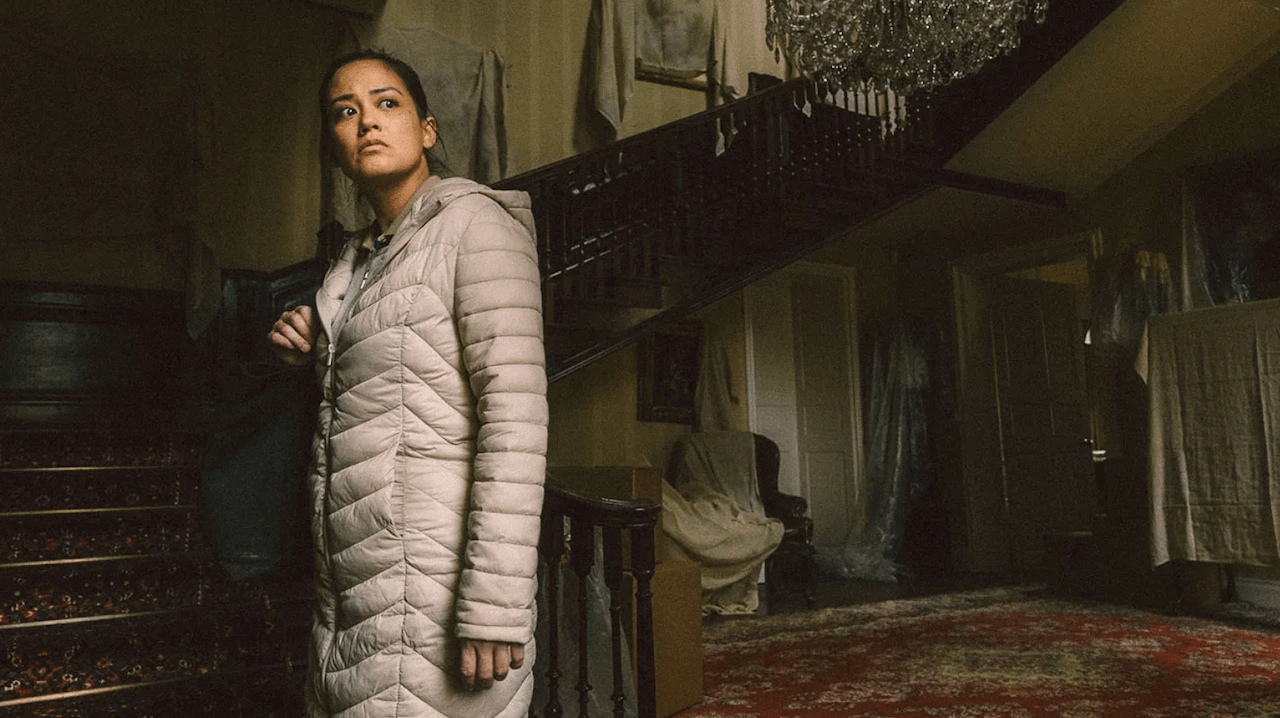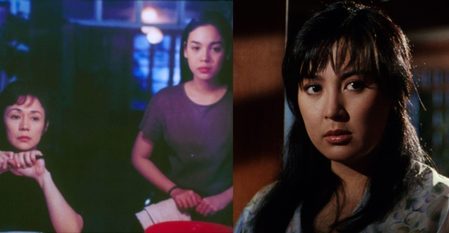SUMMARY
This is AI generated summarization, which may have errors. For context, always refer to the full article.

Spoilers ahead.
There seems to be a steady energy in international cinema of late that contends with Filipino labor, steered by characters placed in scenarios that push them to make decisions that might alter the course of their lives. From the bewitching turn of Chai Fonacier in Lorcan Finnegan’s Nocebo to the intensity of Dolly de Leon’s ascent as island captain in Ruben Östlund’s Triangle of Sadness, the way these experiences are uprooted are often propelled by clever decoys and a sense of pertness, by sheer will to impress, revealing in the process the proclivity of its foreign makers for forging spectacles out of something they cannot truly grasp.

In Raging Grace, British-Filipino writer and director Paris Zarcilla attempts to disrupt this vantage point. The film is among the highlights of last year’s South by Southwest Film Festival, after winning best narrative feature and best debut. It is the first installment in the director’s “Rage” trilogy, a thoughtful project that excavates the horrors of the immigrant experience, reflecting his commitment to surfacing stories of the disenfranchised and exposing its extensive history.
Guided by this diaspora, Zarcilla proceeds with caution, patiently orchestrating suspense that seems to guarantee fulfillment and provide insight past the surface. What comes out of it, though, is rather frustrating — a vision whose scale is truncated by its maker’s tiring pronouncements, by his own fear for his subjects.
Much of the story is set in the old, spacious mansion, where Joy (Max Eigenmann), an undocumented immigrant, dwells and where she hides her mischievous daughter Grace (Jaeden Paige Boadilla) for the meantime, as she tries to save up to get their papers fixed and evade deportation. Joy is a tireless worker, who flits from one job to the next, always in search of stability and security.
Like most Filipino domestic helpers forced to seek greener pastures across many parts of the world, she is trained to serve and sacrifice, and taught to internalize abuse, of which there are many, as a direct consequence of her wanting a better life. At work, she is either ignored or observed diligently, as she scrubs the toilet, folds the clothes, or picks up human shit. She stomachs all this out of necessity, otherwise she might end up dead and kept in a cabinet like Gloria, the Filipino maid, who served for several years the estate owner, “Master” Garrett (David Hayman), who is then placed in a drug-induced coma by his great niece Katherine (Leanne Best).
Zarcilla is very deliberate in his treatment, with texts scattered throughout the film, eager to explain the themes and metaphors to the viewer, thereby preempting plot points, which unfold abrasively and are often unrewarding. The result is a structure with a disordered rhythm. To some extent, this sort of plotting pushes the viewer to drift off, because the story is no longer nourishing, populated by tactics, if not baits, that promise to induce dread and anxiety, but miss the target altogether. There is notable sleepwalking, dark secrets in the attic, and misty visions conflating what is real and what is imagined. And as with many thrillers, Zarcilla wants us to wait for the right time, and it is a sound request. Satisfaction, after all, is an empty feeling without the build-up. But the film hardly gets there, if at all.
As much as it foregrounds the overlooked horrors of immigrant life, what lords over Raging Grace is how it exoticizes that intent to the point of making an unnecessary theater out of it, which is quite off-putting considering where the director draws from. The soundscape, dynamic and cutting as it is, reinforces this tendency, as though it sees the exotic solely as part of the motif, a garnish admired for its beauty and peculiarity and nothing more. An hour into the film, Joy comes across a handful of unsent letters written by the former helper, and the moment sticks out for its clunky use of Tagalog, as if the speaker is unaware of her own language.
The endnote acts as the most potent, if not the most touching, accomplice to this aria of exoticism. Before us is an immigrant choir in full Cordilleran regalia performing a rendition of “Ilay Gandangan,” interspersed with another group dancing the tinikling, which winds up as rather performative in an attempt to provide texture, if not a semblance of authenticity. It is an ending that is too artificial to appeal to emotion.
Should Raging Grace dare make a strong case for itself, then the argument must hinge on the work rendered by its lead. Eigenmann, despite the lapses in characterization, effortlessly settles in the role: a woman whose maternal sorrows outweigh the limits of her strength, whose every action must be carefully measured lest she loses what little she has, whose path has long been paved by those before her. There is a lot to admire in her unwavering optimism that things will turn out fine in the long run, never mind the certainties and cruelties of disappointment.
But Zarcilla undercuts this interiority, the infinite routes where the character can go, by trapping Joy in her own fear, whether that fear be considered in the context of parenthood, material insecurity, or colonial violence. Consider how Joy defers to “Master” Garrett for help when state agents figure out her status, oblivious that the arrest is also the old man’s doing. When she gets out of prison, Katherine is there to save her to remain in the country. Throughout the film, Zarcilla wields the anxieties of his protagonist and goads her into a moment of liberation, but that liberation remains at the behest of her oppressors, of the white people that have taken so much from her. Clearly the character longs for more, past the confines of this imagination, but the film does not afford her that grace. – Rappler.com
Add a comment
How does this make you feel?

There are no comments yet. Add your comment to start the conversation.